12 Fun Things To Do With Young Toddlers
September 14, 2023
As babies grow into curious toddlers and their language skills start to take off, the adults in their lives can nurture those skills every day with readily available items and a little creativity. Today’s post—excerpted and adapted from Talk to Me, Baby! by Betty Bardige—gives you 12 fun, low-cost ideas to try. The following playful activities for are easy for both parents and child care providers to use throughout the day as a way to boost language and other key skills.
Turn everyday items into fun toys. For example, turn a laundry basket or cardboard box into a “car” or “boat” and give the child a ride. Talk about where you are going.
 Make stuffed animals talk. When a toddler will let you hold one of her favorite stuffed animals, treat it like a puppet and have it engage her in conversation and play. “Want to see me jump? Jump! Jump! Jump! Way up high! Boom! I fell down. Can you give me a kiss?”
Make stuffed animals talk. When a toddler will let you hold one of her favorite stuffed animals, treat it like a puppet and have it engage her in conversation and play. “Want to see me jump? Jump! Jump! Jump! Way up high! Boom! I fell down. Can you give me a kiss?”
Point out and name the sights on a walk. Walks can include looping around the block or even just around a room. Stop to pick up a leaf or a toy, pet the dog gently and feel her soft fur, smell the flowers, open a cabinet or box to see what’s inside, investigate anything that intrigues the child, and talk to everyone you know.
Practice greetings and farewells. Help the child greet people with a word, wave, or handshake. Encourage the child to say “hello” to favorite things and places when he enters a room or say “bye-bye” to them when he leaves or “good night” to them at bedtime.
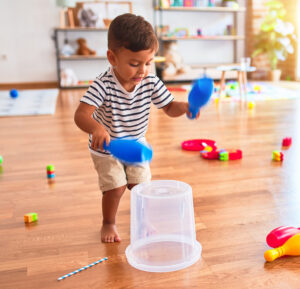 Start a toddler marching band. Give a small group of toddlers simple rhythm instruments—such as two pot lids, a pot and a wooden spoon, a shaker made by filling a cup or can with rice and sealing the top, a bell or baby rattle, or a set of chop sticks—and start the music. Lead the band around the room as you sing, shake, and bang together.
Start a toddler marching band. Give a small group of toddlers simple rhythm instruments—such as two pot lids, a pot and a wooden spoon, a shaker made by filling a cup or can with rice and sealing the top, a bell or baby rattle, or a set of chop sticks—and start the music. Lead the band around the room as you sing, shake, and bang together.
Go on a pretend shopping trip. This activity is especially fun for a toddler who likes to collect or carry things. Give him a large tote bag, a toy cart or wagon, or a stroller, and help him fill it with favorite objects as he travels around a room. Name each object together as he places it in the bag or cart.
 Give the toddler a puzzle to put together. Children might enjoy a simple inset puzzle or shape sorter, a set of large snap-together beads or interlocking blocks, or a toy that comes apart into a few pieces and can be easily reassembled. You can also create your own puzzles by printing digital photographs on large mailing labels, affixing them to cardboard or heavy tag board, and cutting out a simple shape or making two or three interconnecting pieces. Use language to support the toddler’s efforts to assemble the puzzle. “Where does that piece go?” “Look—here’s a circle shape, just like that piece.” “Try turning it around.” “It fits! You did it!”
Give the toddler a puzzle to put together. Children might enjoy a simple inset puzzle or shape sorter, a set of large snap-together beads or interlocking blocks, or a toy that comes apart into a few pieces and can be easily reassembled. You can also create your own puzzles by printing digital photographs on large mailing labels, affixing them to cardboard or heavy tag board, and cutting out a simple shape or making two or three interconnecting pieces. Use language to support the toddler’s efforts to assemble the puzzle. “Where does that piece go?” “Look—here’s a circle shape, just like that piece.” “Try turning it around.” “It fits! You did it!”
Create a family photo album. The album can include pictures of family members, pets, close friends, special experiences, and favorite items or activities that are safely laminated or encased in sturdy plastic sleeves. “Read” the album with the toddler frequently, talking about the pictures and asking the child to find particular pages or details. Bring it along on outings to new or potentially stressful places (e.g., the doctor’s office, the grocery store), and encourage the toddler to look at it whenever she misses her parents.
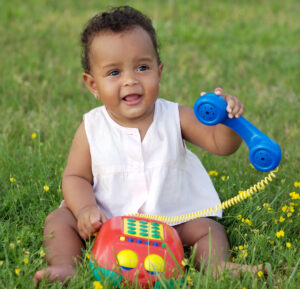 Pretend to talk on the phone. A toy phone (or a real one that is temporarily disabled) is a terrific toddler toy. Some toddlers enjoy babbling or talking into the phone, with or without an imaginary audience. Others are more interested in pushing the buttons. In either case, the play is even more fun when an adult gets involved. “Hi, Chandra. This is Mommy calling. Do you want to have some lunch?” “Let’s call your friend Big Bird. I think his number is 1-2-3.”
Pretend to talk on the phone. A toy phone (or a real one that is temporarily disabled) is a terrific toddler toy. Some toddlers enjoy babbling or talking into the phone, with or without an imaginary audience. Others are more interested in pushing the buttons. In either case, the play is even more fun when an adult gets involved. “Hi, Chandra. This is Mommy calling. Do you want to have some lunch?” “Let’s call your friend Big Bird. I think his number is 1-2-3.”
Try sliding different small objects down a slide. Select a collection that includes both things that roll and things don’t, such as a ball, a toy car, a stuffed animal or doll, a blanket, and a book. Talk about which objects slide down fast or slow, which objects go far, which need a push, and which get stuck. Ask, for example, if the car slides better on its side, back, or wheels.
 Introduce the toddler to painting and drawing. There are many fun and not-too-messy ways to do this. For example, on a sunny day, give the toddler a bucket of water and a large brush and join him in painting the sidewalk. Let her fingerpaint on a highchair tray or washable placemat, using yogurt or pudding. Tape a large piece of paper or a shopping bag to the refrigerator and use nontoxic markers to decorate it. Talk about the pictures the toddler is making and the tools she is using. Note that she is writing—or drawing or painting—just like big people do.
Introduce the toddler to painting and drawing. There are many fun and not-too-messy ways to do this. For example, on a sunny day, give the toddler a bucket of water and a large brush and join him in painting the sidewalk. Let her fingerpaint on a highchair tray or washable placemat, using yogurt or pudding. Tape a large piece of paper or a shopping bag to the refrigerator and use nontoxic markers to decorate it. Talk about the pictures the toddler is making and the tools she is using. Note that she is writing—or drawing or painting—just like big people do.
Do something silly. Put a cup on your head or pretend to nibble on a block as if it were an ear of corn. Give the toddler similar props and see if he will imitate you. Carry on a nonverbal conversation by imitating the toddler’s antics and encouraging him to imitate yours. Or talk about what you are doing. “I put the cup on my head. Boom. It fell off. I put it back on again.” Repeat the action and comments, and see if he will imitate some of your words.
Use the ideas in this post to strengthen bonds with the toddlers you care for and boost their development in language and other key areas. And pick up the book behind today’s post for a down-to-earth guide to engaging with kids in ways that directly support their language skills and overall development.
P.S. Don’t forget that activities should be supervised at all times by an adult. Any material, food, or toy given to a young child should be reviewed for safety.
Talk to Me, Baby!
How You Can Support Young Children’s Language Development, Second Edition
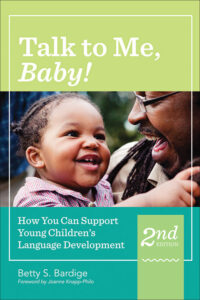 By Betty S. Bardige, Ed.D.
By Betty S. Bardige, Ed.D.
This warm and wise book takes you on a fascinating tour through six stages in a child’s language development—from baby babbles and to kindergarten literacy skills—and gives you practical strategies for supporting language at every stage.
LEARN MORE
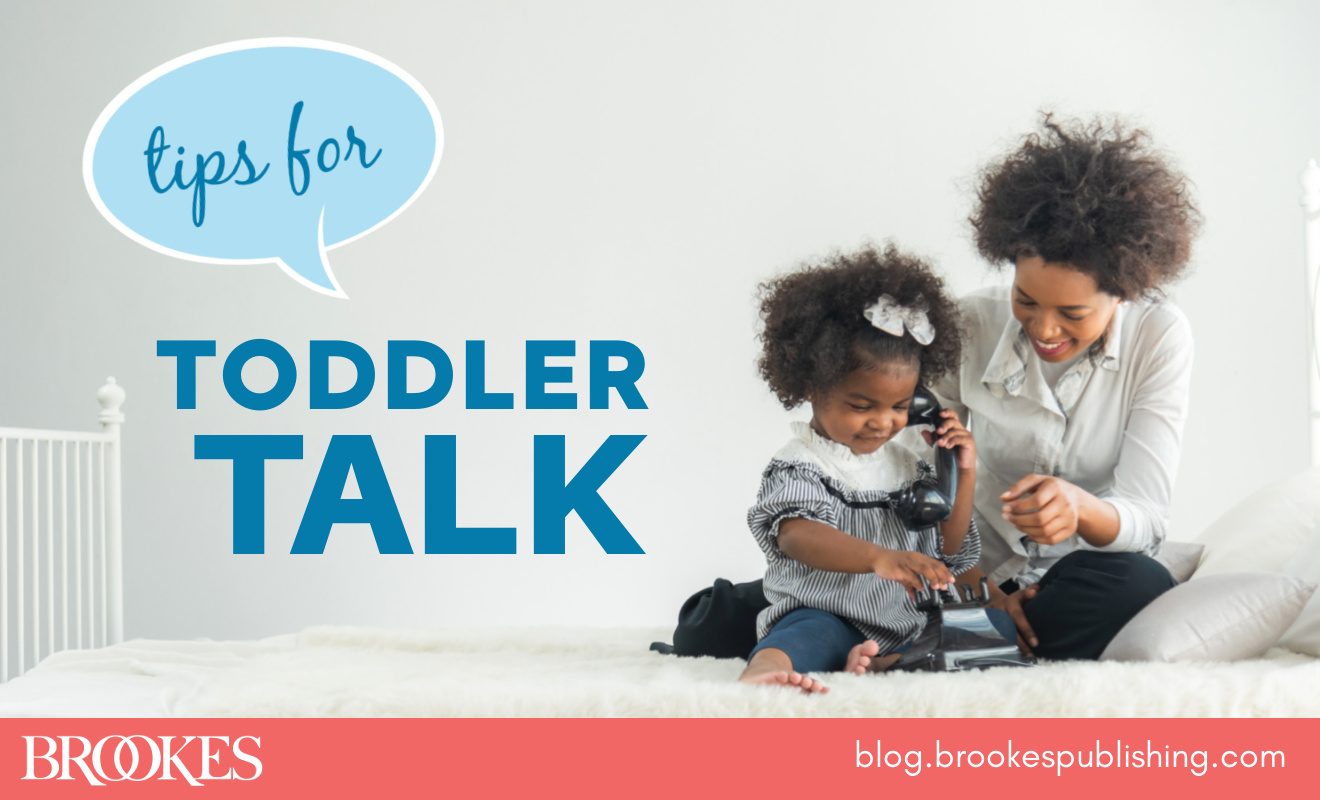

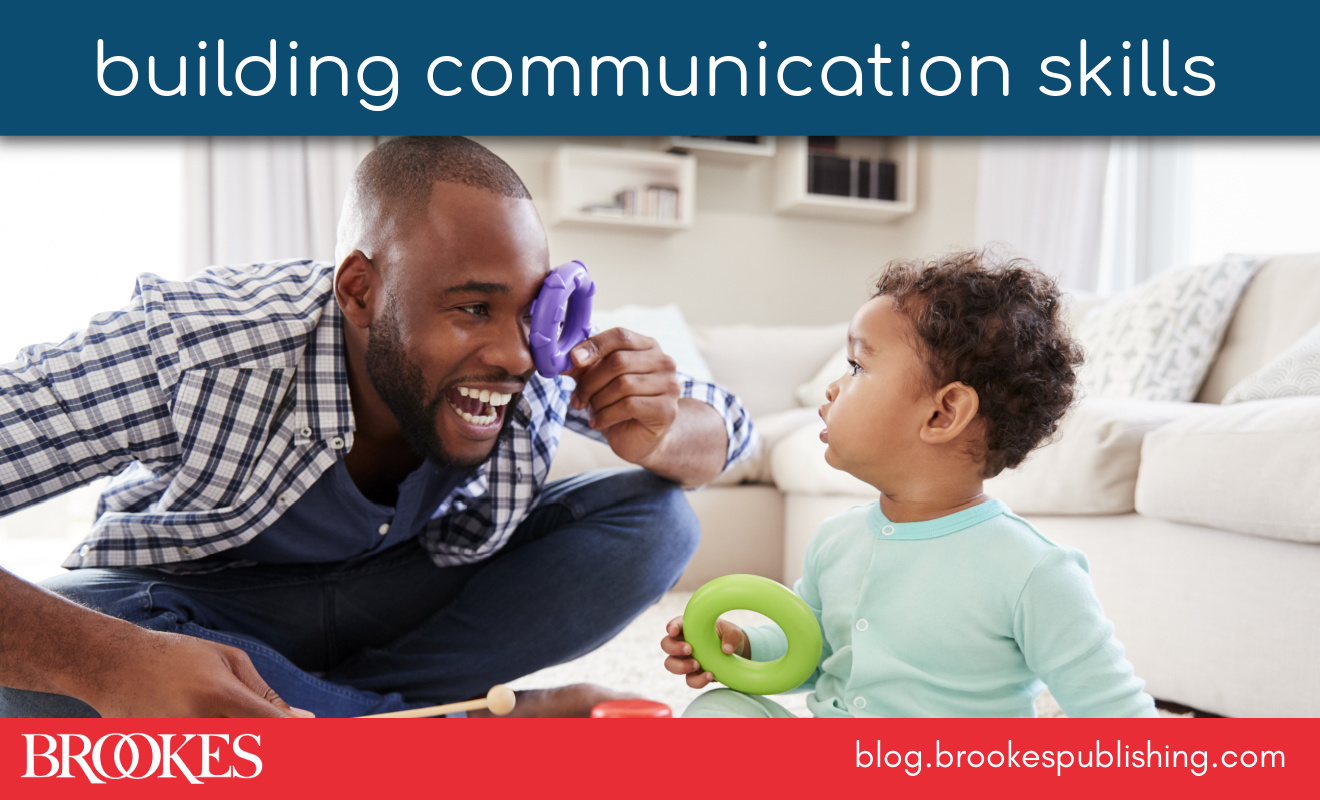
Write a Comment
Your email address will not be published. Required fields are marked *
Post a Comment